Oracle EBS Upgrade from 12.2.0 to R12.2.12
This post will offer comprehensive guidance on upgrading Oracle EBS Release R12.2.0 to R12.2.12. It is crucial to understand that this guide is part of a series dedicated to EBS apps upgrades. Hence, it is important to acknowledge that the specific patches needed for a fresh installation of the R12.2.0 version may differ. Nevertheless, the steps described in this post will remain unchanged regardless of any variations in the required patches.
To install version 12.2.0 of Oracle APPS on OEL 7.9, you can refer to the following link the Installation of 12.2.0, You can follow the Link:
Installation of Oracle APPS 12.2.0 on OEL 7.9
To provide a clearer understanding, I have organized this blog into the following sections:
Section 1 – ETCC (E-Business Suite Technology Codelevel Checker)
Section 2 – Preparation of Applying 12.2.12 Upgrade Patch
Section 3 – Applying 12.2.12 Upgrade Patch
Section 4 – Post Upgrade Step
Section 5 – Enabling JWS
Section 6 – Starting and Checking the Application
Section 1 – ETCC (E-Business Suite Technology Codelevel Checker)
To assist you in identifying any database or middle-tier patches that might be necessary for your E-Business Suite Release 12.2 system, the E-Business Suite Technology Codelevel Checker (ETCC) tool has been made available. Notably, this utility has undergone significant enhancements. It now provides a comprehensive mapping of bug fixes to patches, generating a Patch Recommendation Summary. This summary will provide you with a list of the required patches, including their versions and associated filenames, tailored to your specific system.
The EBS Technology Code Level Checker (ETCC) includes two scripts that examine the Oracle Homes of both the Database and the Middle tier. These scripts serve to identify any missing bug fixes that are necessary for Oracle E-Business Suite Release 12.2. It is highly recommended by Oracle to utilize this utility in order to ensure that all the required bug fixes for the database and middle tier have been successfully installed.
Step -1 Applying ETCC Patches Through ET-PAT
|
Overview: – FMW WebTier 11.1.1.9 Specifically, ETPAT-AT: |
Based on the information provided in my previous post regarding (Link: Downloading EBS Media and Link: Creating the EBS Stage), I have successfully downloaded the media files for version 12.2.12. Therefore, we will utilize these media files to upgrade the application from version 12.2.0 to 12.2.12.
Running ET-PAT in Terminal
|
[oracle@test1 ~]$ cd /home/apps/stage/stage12212/patches/ETPAT-AT [oracle@test1 ETPAT-AT]$ unzip p32208510_R12_GENERIC.zip Archive: p32208510_R12_GENERIC.zip inflating: etpat_at.pl inflating: post_install_steps.xml inflating: README.txt [oracle@test1 ETPAT-AT]$ source /u01/oracle/PROD/fs1/EBSapps/appl/APPSPROD_test1.env [oracle@test1 ETPAT-AT]$ perl etpat_at.pl Enter 12.2.0 Run edition file system context file: /u01/oracle/PROD/fs1/inst/apps/PROD_test1/appl/admin/PROD_test1.xml ********************************************************** Validating the context file… Context file exists: /u01/oracle/PROD/fs1/inst/apps/PROD_test1/appl/admin/PROD_test1.xml *********************************************************** Start Time: Thu Jul 13 02:30:49 PKT 2023 *********************************************************** File System level is 12.2.0 *********************************************************** Sourcing the 12.2 RUN File System Sourcing Apps Environment file /u01/oracle/PROD/fs1/EBSapps/appl/APPSPROD_test1.env *********************************************************** *********************************************************** Generating ocm.rsp file for silent installation Provide your email address to be informed of security issues, install and initiate Oracle Configuration Manager. Easier for you if you use your My Oracle Support Email address/User Name. Visit http://www.oracle.com/support/policies.html for details. Email address/User Name: You have not provided an email address for notification of security issues. Do you wish to remain uninformed of security issues ([Y]es, [N]o) [N]: The OCM configuration response file (/home/apps/stage/stage12212/patches/ETPAT-AT/ocm.rsp) was successfully created. *********************************************************** Platform: LINUX_X86-64 *********************************************************** Enter APPS schema name [APPS]: apps Enter password for apps schema: Validating apps user login details… Password validation is completed ****************************************************************** EBS Release level is 12.2.0 ***************************************************************** Validating pre-requisite files availability under Technology Stack Patching tool stage area… Post install steps file post_install_steps.xml exists under Technology Stack Patching tool stage area **************************************************************** Enter directory where you downloaded ETCC Patch 17537119: /home/apps/stage/stage12212/patches/EBS ******************************************* Validating the Latest ETCC patch availability… ETCC Patch /home/apps/stage/stage12212/patches/EBS/p17537119_R12_GENERIC.zip exists Archive: /home/apps/stage/stage12212/patches/EBS/p17537119_R12_GENERIC.zip inflating: /home/apps/stage/stage12212/patches/EBS/checkDBpatch.cmd inflating: /home/apps/stage/stage12212/patches/EBS/checkDBpatch.sh inflating: /home/apps/stage/stage12212/patches/EBS/checkMTpatch.cmd inflating: /home/apps/stage/stage12212/patches/EBS/checkMTpatch.sh inflating: /home/apps/stage/stage12212/patches/EBS/db/cloud/txk_R1220_EXABM_mappings.xml inflating: /home/apps/stage/stage12212/patches/EBS/db/cloud/txk_R1220_DBCS_base_bugs.xml inflating: /home/apps/stage/stage12212/patches/EBS/db/cloud/txk_R1220_DBCS_RAC_base_bugs.xml inflating: /home/apps/stage/stage12212/patches/EBS/db/cloud/txk_R1220_VMDB_RAC_base_bugs.xml inflating: /home/apps/stage/stage12212/patches/EBS/db/cloud/txk_R1220_EXACS_mappings.xml inflating: /home/apps/stage/stage12212/patches/EBS/db/cloud/txk_R1220_EXACS_base_bugs.xml inflating: /home/apps/stage/stage12212/patches/EBS/db/cloud/txk_R1220_DBCS_RAC_mappings.xml inflating: /home/apps/stage/stage12212/patches/EBS/db/cloud/txk_R1220_DBSI_base_bugs.xml inflating: /home/apps/stage/stage12212/patches/EBS/db/cloud/txk_R1220_VMDB_RAC_mappings.xml inflating: /home/apps/stage/stage12212/patches/EBS/db/cloud/txk_R1220_DBSI_mappings.xml inflating: /home/apps/stage/stage12212/patches/EBS/db/cloud/txk_R1220_DBCS_mappings.xml inflating: /home/apps/stage/stage12212/patches/EBS/db/cloud/txk_R1220_EXABM_base_bugs.xml inflating: /home/apps/stage/stage12212/patches/EBS/db/onprem/txk_R1220_DB_mappings.xml inflating: /home/apps/stage/stage12212/patches/EBS/db/onprem/txk_R1220_DB_base_bugs.xml inflating: /home/apps/stage/stage12212/patches/EBS/db/onprem/txk_R1220_GRID_base_bugs.xml inflating: /home/apps/stage/stage12212/patches/EBS/mw/txk_R1220_MT_base_bugs.xml inflating: /home/apps/stage/stage12212/patches/EBS/mw/txk_R1220_MT_mappings.xml inflating: /home/apps/stage/stage12212/patches/EBS/README.txt inflating: /home/apps/stage/stage12212/patches/EBS/db/cloud/txk_R1220_EXACC_base_bugs.xml inflating: /home/apps/stage/stage12212/patches/EBS/db/cloud/txk_R1220_EXACC_mappings.xml Latest ETCC patch available in ETCC stage area Continuing using txk_R1220_MT_mappings.xml 120.0.12020000.43 2022/07/22 ******************************************* Enter patch stage area: /home/apps/stage/stage12212/patches/ETPAT-AT ******************************************* Validating patch stage area… Patch stage area exists: /home/apps/stage/stage12212/patches/ETPAT-AT Archive: /home/apps/stage/stage12212/patches/EBS/p17537119_R12_GENERIC.zip inflating: /home/apps/stage/stage12212/patches/ETPAT-AT/checkDBpatch.cmd inflating: /home/apps/stage/stage12212/patches/ETPAT-AT/checkDBpatch.sh inflating: /home/apps/stage/stage12212/patches/ETPAT-AT/checkMTpatch.cmd inflating: /home/apps/stage/stage12212/patches/ETPAT-AT/checkMTpatch.sh creating: /home/apps/stage/stage12212/patches/ETPAT-AT/db/ creating: /home/apps/stage/stage12212/patches/ETPAT-AT/db/cloud/ inflating: /home/apps/stage/stage12212/patches/ETPAT-AT/db/cloud/txk_R1220_EXABM_mappings.xml inflating: /home/apps/stage/stage12212/patches/ETPAT-AT/db/cloud/txk_R1220_DBCS_base_bugs.xml inflating: /home/apps/stage/stage12212/patches/ETPAT-AT/db/cloud/txk_R1220_DBCS_RAC_base_bugs.xml inflating: /home/apps/stage/stage12212/patches/ETPAT-AT/db/cloud/txk_R1220_VMDB_RAC_base_bugs.xml inflating: /home/apps/stage/stage12212/patches/ETPAT-AT/db/cloud/txk_R1220_EXACS_mappings.xml inflating: /home/apps/stage/stage12212/patches/ETPAT-AT/db/cloud/txk_R1220_EXACS_base_bugs.xml inflating: /home/apps/stage/stage12212/patches/ETPAT-AT/db/cloud/txk_R1220_DBCS_RAC_mappings.xml inflating: /home/apps/stage/stage12212/patches/ETPAT-AT/db/cloud/txk_R1220_DBSI_base_bugs.xml inflating: /home/apps/stage/stage12212/patches/ETPAT-AT/db/cloud/txk_R1220_VMDB_RAC_mappings.xml inflating: /home/apps/stage/stage12212/patches/ETPAT-AT/db/cloud/txk_R1220_DBSI_mappings.xml inflating: /home/apps/stage/stage12212/patches/ETPAT-AT/db/cloud/txk_R1220_DBCS_mappings.xml inflating: /home/apps/stage/stage12212/patches/ETPAT-AT/db/cloud/txk_R1220_EXABM_base_bugs.xml creating: /home/apps/stage/stage12212/patches/ETPAT-AT/db/onprem/ inflating: /home/apps/stage/stage12212/patches/ETPAT-AT/db/onprem/txk_R1220_DB_mappings.xml inflating: /home/apps/stage/stage12212/patches/ETPAT-AT/db/onprem/txk_R1220_DB_base_bugs.xml inflating: /home/apps/stage/stage12212/patches/ETPAT-AT/db/onprem/txk_R1220_GRID_base_bugs.xml creating: /home/apps/stage/stage12212/patches/ETPAT-AT/mw/ inflating: /home/apps/stage/stage12212/patches/ETPAT-AT/mw/txk_R1220_MT_base_bugs.xml inflating: /home/apps/stage/stage12212/patches/ETPAT-AT/mw/txk_R1220_MT_mappings.xml inflating: /home/apps/stage/stage12212/patches/ETPAT-AT/README.txt inflating: /home/apps/stage/stage12212/patches/ETPAT-AT/db/cloud/txk_R1220_EXACC_base_bugs.xml inflating: /home/apps/stage/stage12212/patches/ETPAT-AT/db/cloud/txk_R1220_EXACC_mappings.xml ******************************************* **************************************************************** Generating WLS inventory report… WLS inventory report file: /home/apps/stage/stage12212/patches/ETPAT-AT/PROD_etpat_at/log/wlsInventory.txt ************************************************************ Your current WLS PSU version: 10.3.6.0.7 ************************************************************ WLS PSU version: 10.3.6.0.7 is not at supported WLS PSU levels. Requires WLS PSU uptake. Note: It is strongly recommended to uptake latest WLS PSU. Select the WLS PSU you want to upgrade to:
Enter your choice (1 or 2 or 3 or 4 or 5 or 6): 1 (Enter The Value 1) You have selected option: 1 You have opted to apply WLS PSU version: 10.3.6.0.220719 Enter ‘Yes’ to Continue (Yes/No): Yes [OPatch patch 6880880. Ensure that p6880880_101000_LINUX.zip, p6880880_111000_Linux-x86-64.zip are downloaded under the patch stage area] [Fusion Middleware consolidated patch 34105303. Ensure that p34105303_R12_LINUX.zip is downloaded under patch stage area] [WLS Patch 34105280. Ensure that p34105280_R12_GENERIC.zip is downloaded under patch stage area] [Smart update Patch 33845432. Ensure that p33845432_R12_GENERIC.zip is downloaded under patch stage area] Download above patches under patch stage area and Enter ‘Yes’ to Continue (Yes/No): Yes
|
|
After This Wait for the ET-PAT to Finish Applying all the ETCC-MT Patches. |
NOTE: We are Skipping DB-ETCC cause we will upgrade DB from 12.1.0.2 (already in extended support) to 19C
Step -2 Apply Consolidated Seed Table Upgrade Patch
Start-up only the Oracle Weblogic Admin Server on the run file system.
|
[oracle@test1 EBS]$ source /u01/oracle/PROD/fs1/EBSapps/appl/APPSPROD_test1.env [oracle@test1 EBS]$ cd $ADMIN_SCRIPTS_HOME [oracle@test1 scripts]$ ./adadminsrvctl.sh start [oracle@test1 EBS]$ cd /home/apps/stage/stage12212/patches/EBS [oracle@test1 EBS]$ unzip p26787701_12.2.0_R12_GENERIC.zip [oracle@test1 EBS]$ cd 26787701/ [oracle@test1 EBS]$ source /u01/oracle/PROD/fs1/EBSapps/appl/APPSPROD_test1.env [oracle@test1 EBS]$ cp -pr 26787701/ /u01/oracle/PROD/fs_ne/EBSapps/patch [oracle@test1 EBS]$ adop phase=apply patches=26787701 hotpatch=yes Enter the APPS password: Enter the SYSTEM password: Enter the WLSADMIN password: [STATEMENT] [END 2023/07/13 13:38:35] Generating Report to spool all logs from ad_zd_logs [STATEMENT] [END 2023/07/13 13:38:36] Generating Post Apply Reports [STATEMENT] [END 2023/07/13 13:38:39] adzdoptl.pl run [STATEMENT] adop phase=apply – Completed Successfully [STATEMENT] Log file: /u01/oracle/PROD/fs_ne/EBSapps/log/adop/3/adop_20230713_132715.log adop exiting with status = 0 (Success) |
Step -3 Apply the Latest AD and TXK Delta Release Update Packs
Review My Oracle Support Knowledge Document 1617461.1, Applying the Latest AD and TXK Release Update Packs to Oracle E-Business Suite Release 12.2
Apply R12.AD.C.Delta.14 (Patch 33600809)
|
[oracle@test1 EBS]$ cd /home/apps/stage/stage12212/patches/EBS [oracle@test1 EBS]$ unzip p33600809_R12.AD.C_R12_LINUX.zip [oracle@test1 EBS]$ cp -pr 33600809/ /u01/oracle/PROD/fs_ne/EBSapps/patch |
Running the Latest Adgrants from the Patch Extracted above
1. Instructions for Running AD Grants
Purpose: Run adgrants.sql to grant privileges and perform other operations for the EBS_SYSTEM user.
a. Create $ORACLE_HOME/appsutil/admin on database server.
| [oracle@test1 appsutil]$ mkdir -p /u01/oracle/PROD/12.1.0/appsutil/admin |
b. Copy adgrants.sql to $ORACLE_HOME/appsutil/admin from [Patch_Directory]/admin .
|
[oracle@test1 ~]$ cd /home/apps/stage/stage12212/patches/EBS/33600809/admin [oracle@test1 admin]$ cp adgrants.sql /u01/oracle/PROD/12.1.0/appsutil/admin |
c. Set the environment to point to ORACLE_HOME on the database server.
| [oracle@test1 ~]$ source /u01/oracle/PROD/12.1.0/PROD_test1.env |
d. Run the adgrants.sql script using SQL*Plus:
|
$ sqlplus /nolog SQL> @$ORACLE_HOME/appsutil/admin/adgrants.sql <APPS schema name> |
2. When running the adgrants.sql script for the first time in an AD.Delta.13 or later environment, the EBS_SYSTEM user will be created and then need to be UNLOCKED using the following command:
|
SQL> ALTER USER EBS_SYSTEM ACCOUNT UNLOCK; User altered. |
Note: The initial password for EBS_SYSTEM must the same as the SYSTEM password. To change the password, run the following command:
| SQL> ALTER USER EBS_SYSTEM IDENTIFIED BY <PASSWORD>; |
Now apply R12.AD.C.Delta.14 (Patch 33600809) Patch in hotpatch mode
|
[oracle@test1 ~]$ cd /home/apps/stage/stage12212/patches/EBS/33600809 [oracle@test1 33600809]$ adop phase=apply patches=33600809 hotpatch=yes workers=4 |
Note:
- This will take time, so Sit back and Relax
- After the above Patch is Completed, there are 2 more AD Delta Patches that need to be apply which will not be downloaded in the 12.2.12 Stage Media, you have to Download it through the Oracle Support Account from Document 1617461.1
I have downloaded Critical Patches and copied it to /home/apps/stage/stage12212/patches/EBS/critical directory
|
[oracle@test1 critical]$ ls -ltrh total 224K -rwxrwxr-x. 1 oracle oinstall 61K Jul 13 15:07 p34681299_R12.AD.C_R12_LINUX.zip -rwxrwxr-x. 1 oracle oinstall 57K Jul 13 15:07 p35280947_R12.AD.C_R12_GENERIC.zip -rwxrwxr-x. 1 oracle oinstall 99K Jul 13 15:07 p34669333_R12.AD.C_R12_LINUX.zip [oracle@test1 critical]$ unzip p34669333_R12.AD.C_R12_LINUX.zip [oracle@test1 critical]$ unzip p35280947_R12.AD.C_R12_GENERIC.zip [oracle@test1 critical]$ cp -pr 35280947/ /u01/oracle/PROD/fs_ne/EBSapps/patch [oracle@test1 critical]$ cp -pr 34669333/ /u01/oracle/PROD/fs_ne/EBSapps/patch [oracle@test1 critical]$ adop phase=apply patches=34669333,35280947 hotpatch=yes merge=yes |
Now, Apply R12.TXK.C.Delta.14 (Patch 33602997)
|
[oracle@test1 EBS]$ cd /home/apps/stage/stage12212/patches/EBS [oracle@test1 EBS]$ unzip p33602997_R12.TXK.C_R12_GENERIC.zip [oracle@test1 EBS]$ cp -pr 33602997/ /u01/oracle/PROD/fs_ne/EBSapps/patch [oracle@test1 EBS]$ adop phase=apply patches=33602997 hotpatch=yes merge=yes |
Section 2 – Preparation of Applying 12.2.12 Upgrade Patch
Step -1 Unzip 12.2.12 Upgrade Patch
|
[oracle@test1 ~]$ cd /home/apps/stage [oracle@test1 stage]$ mv V1031181-01_* /u01/oracle/12212/ [oracle@test1 12212]$ cd /u01/oracle/12212 [oracle@test1 12212]$ ls -ltrh total 5.2G -rwxr-xr-x. 1 oracle oinstall 464M Oct 17 2022 V1031181-01_6of12.zip -rwxr-xr-x. 1 oracle oinstall 488M Oct 17 2022 V1031181-01_9of12.zip -rwxr-xr-x. 1 oracle oinstall 610M Oct 17 2022 V1031181-01_10of12.zip -rwxr-xr-x. 1 oracle oinstall 115M Oct 17 2022 V1031181-01_11of12.zip -rwxr-xr-x. 1 oracle oinstall 494M Oct 17 2022 V1031181-01_8of12.zip -rwxr-xr-x. 1 oracle oinstall 503M Oct 17 2022 V1031181-01_5of12.zip -rwxr-xr-x. 1 oracle oinstall 6.3M Oct 17 2022 V1031181-01_12of12.zip -rwxr-xr-x. 1 oracle oinstall 487M Oct 17 2022 V1031181-01_1of12.zip -rwxr-xr-x. 1 oracle oinstall 501M Oct 17 2022 V1031181-01_2of12.zip -rwxr-xr-x. 1 oracle oinstall 533M Oct 17 2022 V1031181-01_7of12.zip -rwxr-xr-x. 1 oracle oinstall 577M Oct 17 2022 V1031181-01_4of12.zip -rwxr-xr-x. 1 oracle oinstall 486M Oct 17 2022 V1031181-01_3of12.zip [oracle@test1 12212]$ unzip -o ‘*.zip’ [oracle@test1 12212]$ du -sh 33527700/ 13G 33527700/ |
Step -2 Checking Tablespace Pre-Requisite and Services
|
SQL> col tablespace_name format a20; SQL> col file_name format a40; SQL> select FILE_NAME,TABLESPACE_NAME,BYTES/1024/1024 SizeMB from dba_data_files where tablespace_name=’APPS_TS_TX_DATA’; FILE_NAME TABLESPACE_NAME SIZEMB —————————————- ——————– ———- /u01/oracle/PROD/data/a_txn_data03.dbf APPS_TS_TX_DATA 1465 /u01/oracle/PROD/data/a_txn_data02.dbf APPS_TS_TX_DATA 1657.625 /u01/oracle/PROD/data/a_txn_data01.dbf APPS_TS_TX_DATA 1800 /u01/oracle/PROD/data/a_txn_data04.dbf APPS_TS_TX_DATA 1744 SQL> Alter tablespace “APPS_TS_TX_DATA” add DATAFILE ‘/u01/oracle/PROD/data/a_txn_data05.dbf’ SIZE 100M REUSE AUTOEXTEND ON MAXSIZE 25600M; Tablespace altered. SQL> select FILE_NAME, TABLESPACE_NAME, BYTES/1024/1024 SizeMB, Status from dba_temp_files order by tablespace_name; FILE_NAME TABLESPACE_NAME SIZEMB STATUS —————————————- ——————– ———- ——- /u01/oracle/PROD/data/temp01.dbf TEMP1 1100 ONLINE /u01/oracle/PROD/data/temp0001.dbf TEMP1 1000 ONLINE /u01/oracle/PROD/data/temp02.dbf TEMP2 1024 ONLINE
SQL> ALTER TABLESPACE TEMP2 ADD TEMPFILE ‘/u01/oracle/PROD/data/temp0002.dbf’ size 10240M reuse; Tablespace altered. SQL> show parameter service_name; NAME TYPE VALUE ———————————— ———– —————————— service_names string PROD, ebs_patch SQL> alter system set service_names=’PROD’,’ebs_patch’ scope=both; System altered. |
Section 3 – Applying 12.2.12 Upgrade Patch
We will use wait_on_failed_job=yes and flags=autoskip in Adop command
If the ‘wait_on_failed_job=yes‘ parameter is used, customers will have the ability to manipulate failed jobs exclusively through the adctrl utility when the failed job involves a PL/SQL command. However, other types of generate actions, such as form or report generation commands, will not permit customers to manage jobs via adctrl when the mentioned parameter is set to ‘yes’. In such cases, it is recommended to utilize the ‘flags=autoskip‘ option to bypass errors encountered during Oracle Form or report object generation.
Afterward, the form/report errors can be manually addressed by reviewing the ‘autoskip.log’ file.
Reason: Patch Fails and adctrl utility Will Not Show Any Workers To Resume Failed Jobs (Doc ID 2756299.1)
NOTE: Please take note that when executing a patch in downtime mode, specifically by selecting the “apply_downtime” option, the patch will be directly applied to the RUN edition. In order to clone from the RUN edition to the Patch edition, it is necessary to perform cleanup and utilize the “clone_fs” operation.
For monitoring the patch events, open a new session and execute the command ‘adopmon‘.
|
[oracle@test1 ~]$ cd /u01/oracle/12212 [oracle@test1 12212]$ mv 33527700/ /u01/oracle/PROD/fs_ne/EBSapps/patch [oracle@test1 12212]$ adop phase=apply apply_mode=downtime patches=33527700 wait_on_failed_job=yes workers=4 flags=autoskip Enter the APPS password: Enter the EBS_SYSTEM password: Enter the WLSADMIN password: Validating credentials. Initializing. Run Edition context : /u01/oracle/PROD/fs1/inst/apps/PROD_test1/appl/admin/PROD_test1.xml Patch edition context: /u01/oracle/PROD/fs2/inst/apps/PROD_test1/appl/admin/PROD_test1.xml Patch file system free space: 83.64 GB Validating system setup. |
Open another terminal to check adopmon
|
[oracle@test1 ~]$ adopmon Running script. Press Ctrl-C to quit. Enter the APPS password: Validating credentials… Printing the log statements starting from sequence #506405 Timestamp Node name Message Type Message Text ————————————————————————————————————————— 2023/07/13 21:31:03 test1 EVENT Application tier services are down. 2023/07/13 21:31:03 test1 EVENT Continuing with the existing session [Session ID: 3]. 2023/07/13 21:31:03 test1 EVENT ADOP (C.Delta.14) 2023/07/13 21:31:03 test1 EVENT Session ID: 3 2023/07/13 21:31:03 test1 EVENT Node: test1 2023/07/13 21:31:04 test1 EVENT Phase: apply 2023/07/13 21:31:04 test1 EVENT Log: /u01/oracle/PROD/fs_ne/EBSapps/log/adop/3/20230713_213030/adop.log 2023/07/13 21:31:06 test1 EVENT Applying patch 33527700. 2023/07/13 21:31:10 test1 EVENT Log: /u01/oracle/PROD/fs_ne/EBSapps/log/adop/3/20230713_213030/apply/test1/33527700/log/u33527700.log |
|
Since I have an SSD in my laptop and this is a production database rather than a vision database, the patching process took approximately 6 hours to finish. However, if you have limited resources, it may take around 14 to 15 hours. Therefore, I advise you to sit back and relax. You can periodically monitor the patch status after some time to stay updated. |
After the Patch Finishes check the Autoskip Logs as mentioned before, to check any compilation errors
|
[oracle@test1 ~]$ cd /u01/oracle/PROD/fs_ne/EBSapps/log/adop/3/20230713_213030/apply/test1/33527700/log [oracle@test1 log]$ ls -ltrh autoskip.log -rw-r–r–. 1 oracle oinstall 104 Jul 13 21:31 autoskip.log [oracle@test1 log]$ cat autoskip.log ************* Start of AutoPatch session ************* AutoPatch started at: Thu Jul 13 2023 21:31:16 |
As observed, there are no errors recorded in the autoskip.log file. This is because the database in question is a fresh production database. However, if you are upgrading it from an older environment, it is possible to encounter errors in this log. In such cases, it is necessary to address and resolve these errors before proceeding to the next step.
Now We will Run full Cleanup and FS_Clone to Synchronize the Run File System with Patch File System
|
[oracle@test1 PROD]$ adop phase=cleanup cleanup_mode=full workers=4 [oracle@test1 PROD]$ adop phase=fs_clone |
Section 4 – Post Upgrade Step
Step -1 Apply Oracle E-Business Suite Release 12.2.12 Online Help
Now we are going to Apply Oracle E-Business Suite Release 12.2.12 Online Help Using adop hotpatch mode on the run file system, Patch33527707.
I have copied the Downloaded Online Help Patch in the Directory /home/apps/stage/stage12212/patches/ONLINEpatch
|
[oracle@test1 ~]$ cd /home/apps/stage/stage12212/patches/ONLINEpatch [oracle@test1 ONLINEpatch]$ ls -ltrh p33527707_R12_GENERIC.zip -rwxr-xr-x. 1 oracle oinstall 81M Jul 14 01:52 p33527707_R12_GENERIC.zip oracle@test1 ONLINEpatch]$ unzip p33527707_R12_GENERIC.zip |
Now, open a new terminal and Run the Environment file
|
[oracle@test1 ~]$ cd /u01/oracle/PROD/ [oracle@test1 PROD]$ . ./EBSapps.env run E-Business Suite Environment Information —————————————- RUN File System : /u01/oracle/PROD/fs1/EBSapps/appl PATCH File System : /u01/oracle/PROD/fs2/EBSapps/appl Non-Editioned File System : /u01/oracle/PROD/fs_ne
DB Host: test1.example.com Service/SID: PROD Sourcing the RUN File System … |
Go to the Directory where you unzipped the OnlineHelp Patch and Copy the Patch in $PATCH_TOP
|
[oracle@test1 PROD]$ cd /home/apps/stage/stage12212/patches/ONLINEpatch [oracle@test1 ONLINEpatch]$ cp -pR 33527707/ $PATCH_TOP |
Now Run the ADOP to apply patch by command given below
|
[oracle@test1 ONLINEpatch adop phase=apply patches=33527707 hotpatch=yes Enter the APPS password: Enter the EBS_SYSTEM password: Enter the WLSADMIN password: Validating credentials. Initializing. Run Edition context : /u01/oracle/PROD/fs1/inst/apps/PROD_test1/appl/admin/PROD_test1.xml Patch edition context: /u01/oracle/PROD/fs2/inst/apps/PROD_test1/appl/admin/PROD_test1.xml Patch file system free space: 83.64 GB Validating system setup. |
Step -2 Update Database Tier to Latest Code
|
[oracle@test1 PROD]$ . ./EBSapps.env Run E-Business Suite Environment Information —————————————- RUN File System : /u01/oracle/PROD/fs1/EBSapps/appl PATCH File System : /u01/oracle/PROD/fs2/EBSapps/appl Non-Editioned File System : /u01/oracle/PROD/fs_ne DB Host: test1.example.com Service/SID: PROD Sourcing the RUN File System … [oracle@test1 PROD]$ perl $AD_TOP/bin/admkappsutil.pl Starting the generation of appsutil.zip Log file located at /u01/oracle/PROD/fs1/inst/apps/PROD_test1/admin/log/MakeAppsUtil_07141658.log output located at /u01/oracle/PROD/fs1/inst/apps/PROD_test1/admin/out/appsutil.zip MakeAppsUtil completed successfully. |
Copy the appsutil.zip file Created from admkappsutil to <RDBMS ORACLE_HOME>.
|
[oracle@test1 PROD]$ cp /u01/oracle/PROD/fs1/inst/apps/PROD_test1/admin/out/appsutil.zip /u01/oracle/PROD/12.1.0 |
Now Uncompress appsutil.zip, under <RDBMS ORACLE_HOME>.
Open New Terminal
|
[oracle@test1 ~]$ cd /u01/oracle/PROD/12.1.0 |
Make Backup of OLD appsutil folder
|
[oracle@test1 12.1.0]$ cp -pR appsutil appsutil_bkp |
Now unzip Appsutil.zip
|
[oracle@test1 12.1.0]$ unzip -o appsutil.zip |
Run AutoConfig on <RDBMS ORACLE_HOME>.
|
[oracle@test1 ~]$ cd /u01/oracle/PROD/12.1.0/appsutil/scripts/PROD_test1 [oracle@test1 PROD_test1]$ ./adautocfg.sh Enter the APPS user password: The log file for this session is located at: /u01/oracle/PROD/12.1.0/appsutil/log/PROD_test1/07141703/adconfig.log Updating rdbms version in Context file to db121 Updating rdbms type in Context file to 64 bits Configuring templates from ORACLE_HOME … AutoConfig completed successfully. |
Open new Terminal and Run Autoconfig on Application
|
[oracle@test1 ~]$ source /u01/oracle/PROD/EBSapps.env run E-Business Suite Environment Information —————————————- RUN File System : /u01/oracle/PROD/fs1/EBSapps/appl PATCH File System : /u01/oracle/PROD/fs2/EBSapps/appl Non-Editioned File System : /u01/oracle/PROD/fs_ne DB Host: test1.example.com Service/SID: PROD Sourcing the RUN File System … [oracle@test1 ~]$ cd $ADMIN_SCRIPTS_HOME [oracle@test1 scripts]$ ./adautocfg.sh Enter the APPS user password: The log file for this session is located at: /u01/oracle/PROD/fs1/inst/apps/PROD_test1/admin/log/07141710/adconfig.log wlsDomainName: EBS_domain_PROD WLS Domain Name is VALID. AutoConfig is configuring the Applications environment… AutoConfig will consider the custom templates if present. Using CONFIG_HOME location : /u01/oracle/PROD/fs1/inst/apps/PROD_test1 Classpath : /u01/oracle/PROD/fs1/FMW_Home/Oracle_EBS-app1/shared-libs/ebs-appsborg/WEB-INF/lib/ebsAppsborgManifest.jar:/u01/oracle/PROD/fs1/EBSapps/comn/java/classes Using Context file : /u01/oracle/PROD/fs1/inst/apps/PROD_test1/appl/admin/PROD_test1.xml Context Value Management will now update the Context file Updating Context file…COMPLETED Attempting upload of Context file and templates to database…COMPLETED Configuring templates from all of the product tops… Configuring AD_TOP……..COMPLETED Configuring FND_TOP…….COMPLETED Configuring ICX_TOP…….COMPLETED Configuring MSC_TOP…….COMPLETED Configuring IEO_TOP…….COMPLETED Configuring BIS_TOP…….COMPLETED Configuring CZ_TOP……..COMPLETED Configuring SHT_TOP…….COMPLETED Configuring AMS_TOP…….COMPLETED Configuring CCT_TOP…….COMPLETED Configuring WSH_TOP…….COMPLETED Configuring CLN_TOP…….COMPLETED Configuring OKE_TOP…….COMPLETED Configuring OKL_TOP…….COMPLETED Configuring OKS_TOP…….COMPLETED Configuring CSF_TOP…….COMPLETED Configuring IBY_TOP…….COMPLETED Configuring JTF_TOP…….COMPLETED Configuring MWA_TOP…….COMPLETED Configuring CN_TOP……..COMPLETED Configuring CSI_TOP…….COMPLETED Configuring WIP_TOP…….COMPLETED Configuring CSE_TOP…….COMPLETED Configuring EAM_TOP…….COMPLETED Configuring GMF_TOP…….COMPLETED Configuring PON_TOP…….COMPLETED Configuring FTE_TOP…….COMPLETED Configuring ONT_TOP…….COMPLETED Configuring AR_TOP……..COMPLETED Configuring AHL_TOP…….COMPLETED Configuring IES_TOP…….COMPLETED Configuring OZF_TOP…….COMPLETED Configuring CSD_TOP…….COMPLETED Configuring IGC_TOP…….COMPLETED AutoConfig completed successfully. |
Section 5 – Enabling JWS
|
What is Java Web Start?
|
“If you wish to enable JWS, you can refer to the provided document titled ‘Using Java Web Start with Oracle E-Business Suite (Doc ID 2188898.1)’. However, please note that if your environment is on version 12.2.10 or below, the steps outlined in the document are applicable.
In our specific case, as we have already upgraded our application to version 12.2.12, all the necessary patches to enable JWS have been included in the upgrade patch. Therefore, we only need to follow the subsequent process described in this section to enable JWS.”
Step -1 Update Context File to Enable JWS
Open the Application Context file in VI Editor as shown below
As you Can see out forms launch method is set to browser, we need to change it to jws
|
[oracle@test1 ~]$ echo $CONTEXT_FILE /u01/oracle/PROD/fs1/inst/apps/PROD_test1/appl/admin/PROD_test1.xml [oracle@test1 ~]$ grep s_forms_launch_method $CONTEXT_FILE <config_option type=”techstack” oa_var=”s_forms_launch_method”>browser</config_option> [oracle@test1 ~]$ vi /u01/oracle/PROD/fs1/inst/apps/PROD_test1/appl/admin/PROD_test1.xml |
After Changing the Parameter of s_forms_launch_method Parameter to jws , Save and Close the Context File

Step -2 Running Autoconfig on Application Tier
|
[oracle@test1 ~]$ sh $ADMIN_SCRIPTS_HOME/adautocfg.sh Enter the APPS user password: The log file for this session is located at: /u01/oracle/PROD/fs1/inst/apps/PROD_test1/admin/log/07141755/adconfig.log wlsDomainName: EBS_domain_PROD WLS Domain Name is VALID. AutoConfig is configuring the Applications environment… AutoConfig will consider the custom templates if present. Using CONFIG_HOME location : /u01/oracle/PROD/fs1/inst/apps/PROD_test1 Classpath : /u01/oracle/PROD/fs1/FMW_Home/Oracle_EBS-app1/shared-libs/ebs-appsborg/WEB-INF/lib/ebsAppsborgManifest.jar:/u01/oracle/PROD/fs1/EBSapps/comn/java/classes Using Context file : /u01/oracle/PROD/fs1/inst/apps/PROD_test1/appl/admin/PROD_test1.xml Context Value Management will now update the Context file Updating Context file…COMPLETED Attempting upload of Context file and templates to database…COMPLETED Configuring templates from all of the product tops… Configuring AD_TOP……..COMPLETED Configuring FND_TOP…….COMPLETED Configuring ICX_TOP…….COMPLETED Configuring MSC_TOP…….COMPLETED Configuring IEO_TOP…….COMPLETED Configuring BIS_TOP…….COMPLETED Configuring CZ_TOP……..COMPLETED Configuring SHT_TOP…….COMPLETED Configuring AMS_TOP…….COMPLETED Configuring CCT_TOP…….COMPLETED Configuring WSH_TOP…….COMPLETED Configuring CLN_TOP…….COMPLETED Configuring OKE_TOP…….COMPLETED Configuring OKL_TOP…….COMPLETED Configuring OKS_TOP…….COMPLETED Configuring CSF_TOP…….COMPLETED Configuring IBY_TOP…….COMPLETED Configuring JTF_TOP…….COMPLETED Configuring MWA_TOP…….COMPLETED Configuring CN_TOP……..COMPLETED Configuring CSI_TOP…….COMPLETED Configuring WIP_TOP…….COMPLETED Configuring CSE_TOP…….COMPLETED Configuring EAM_TOP…….COMPLETED Configuring GMF_TOP…….COMPLETED Configuring PON_TOP…….COMPLETED Configuring FTE_TOP…….COMPLETED Configuring ONT_TOP…….COMPLETED Configuring AR_TOP……..COMPLETED Configuring AHL_TOP…….COMPLETED Configuring IES_TOP…….COMPLETED Configuring OZF_TOP…….COMPLETED Configuring CSD_TOP…….COMPLETED Configuring IGC_TOP…….COMPLETED AutoConfig completed successfully. |
Step -3 Regenate JAR Files through ADADMIN Utility
|
[oracle@test1 ~]$ adadmin Copyright (c) 2002, 2012 Oracle Corporation Redwood Shores, California, USA Oracle E-Business Suite AD Administration Version 12.2.0 NOTE: You may not use this utility for custom development unless you have written permission from Oracle Corporation. Your default directory is ‘/u01/oracle/PROD/fs1/EBSapps/appl’. Is this the correct APPL_TOP [Yes] ? AD Administration records your AD Administration session in a text file you specify. Enter your AD Administration log file name or press [Return] to accept the default file name shown in brackets. Filename [adadmin.log] : ************* Start of AD Administration session ************* AD Administration version: 12.2.0 AD Administration started at: Fri Jul 14 2023 18:07:31
APPL_TOP is set to /u01/oracle/PROD/fs1/EBSapps/appl You can be notified by email if a failure occurs. Do you wish to activate this feature [No] ? Please enter the batchsize [1000] : Please enter the name of the Oracle E-Business Suite System that this APPL_TOP belongs to. The Applications System name must be unique across all Oracle Applications Systems at your site, must be from 1 to 30 characters long, may only contain alphanumeric and underscore characters, and must start with a letter. Sample Applications System names are: “prod”, “test”, “demo” and “Development_2”. Applications System Name [PROD] : PROD * NOTE: If you do not currently have certain types of files installed in this APPL_TOP, you may not be able to perform certain tasks. Example 1: If you don’t have files used for installing or upgrading the database installed in this area, you cannot install or upgrade the database from this APPL_TOP. Example 2: If you don’t have forms files installed in this area, you cannot generate them or run them from this APPL_TOP. Example 3: If you don’t have concurrent program files installed in this area, you cannot relink concurrent programs or generate reports from this APPL_TOP. Do you currently have files used for installing or upgrading the database installed in this APPL_TOP [YES] ? YES * Do you currently have Java and HTML files for HTML-based functionality installed in this APPL_TOP [YES] ? YES * Do you currently have Oracle E-Business Suite forms files installed in this APPL_TOP [YES] ? YES * Do you currently have concurrent program files installed in this APPL_TOP [YES] ? YES * Please enter the name Oracle E-Business Suite will use to identify this APPL_TOP. The APPL_TOP name you select must be unique within an Oracle E-Business Suite System, must be from 1 to 30 characters long, may only contain alphanumeric and underscore characters, and must start with a letter. Sample APPL_TOP Names are: “prod_all”, “demo3_forms2”, and “forms1”. APPL_TOP Name [AT_test1] : AT_test1 * You are about to use or modify Oracle E-Business Suite product tables in your ORACLE database ‘PROD’ using ORACLE executables in ‘/u01/oracle/PROD/fs1/EBSapps/10.1.2’. Is this the correct database [Yes] ? AD Administration needs the password for your ‘EBS_SYSTEM’ ORACLE schema in order to determine your installation configuration. Enter the password for your ‘EBS_SYSTEM’ ORACLE schema: The ORACLE username specified below for Application Object Library uniquely identifies your existing product group: APPLSYS Enter the ORACLE password of Application Object Library [APPS] : AD Administration is verifying your username/password. EBSSYS code level : [C.1] Connecting to EBS_SYSTEM with SYSTEM password The status of various features in this run of AD Administration is: <-Feature version in-> Feature Active? APPLTOP Data model Flags —————————— ——- ——– ———– ———– CHECKFILE Yes 1 1 Y N N Y N Y PREREQ Yes 6 6 Y N N Y N Y CONCURRENT_SESSIONS No 2 2 Y Y N Y Y N PATCH_TIMING Yes 2 2 Y N N Y N Y PATCH_HIST_IN_DB Yes 6 6 Y N N Y N Y SCHEMA_SWAP Yes 1 1 Y N N Y Y Y JAVA_WORKER Yes 1 1 Y N N Y N Y CODELEVEL Yes 1 1 Y N N Y N Y
Identifier for the current session is 35792 Reading product information from file… Reading language and territory information from file… Reading language information from applUS.txt … Reading database to see what industry is currently installed. Reading FND_LANGUAGES to see what is currently installed. Currently, the following language is installed: Code Language Status —- ————————————— ——— US American English Base Your base language will be AMERICAN. Setting up module information. Reading database for information about the modules. Saving module information. Reading database for information about the products. Reading database for information about how products depend on each other. Reading topfile.txt … Saving product information. AD code level : [C.14] *** Maintaining the Run File System (in Hotpatch mode) *** *** Edition Enabled User *** AD Administration Main Menu ————————————————–
Enter your choice [5] :1 |
| Enter 1 click press enter | 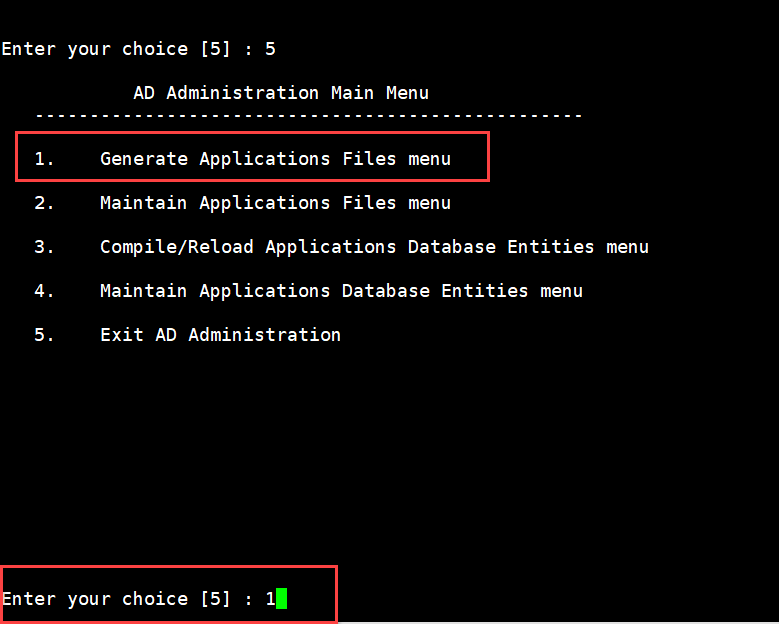 |
|
 |
|
Jar Files Starts Generating |
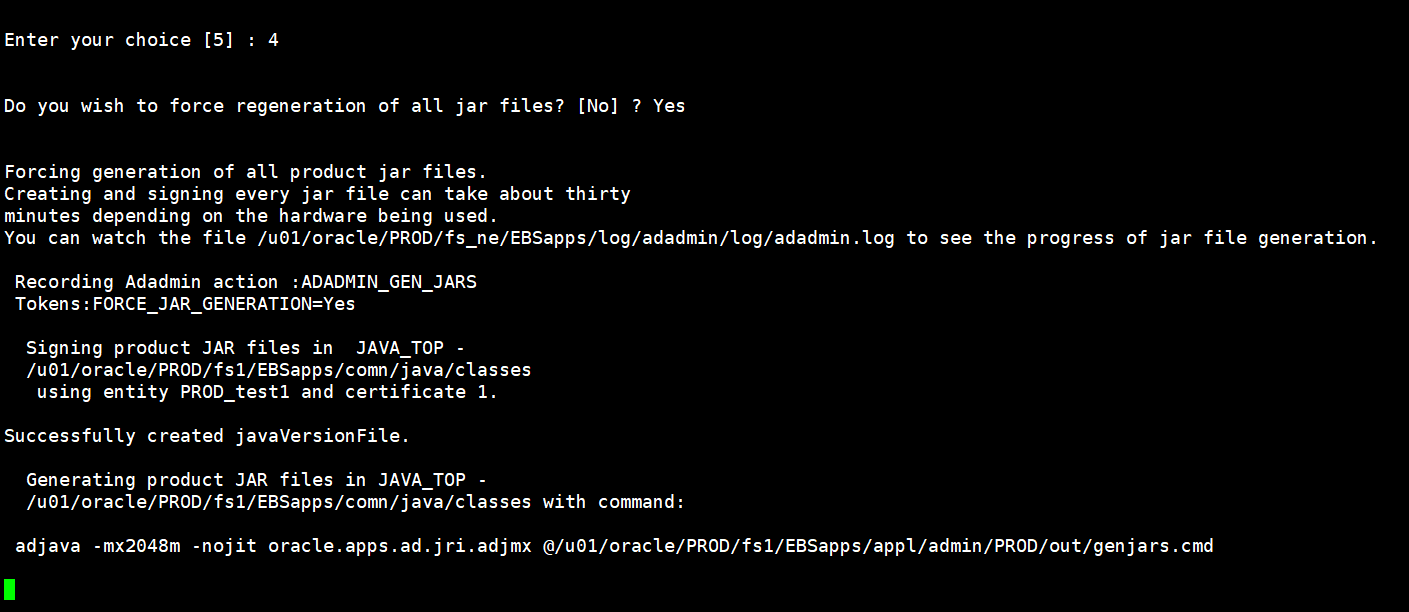 |
|
Press Enter to continue |
 |
|
Press Enter |
 |
|
Press Enter to EXIT |
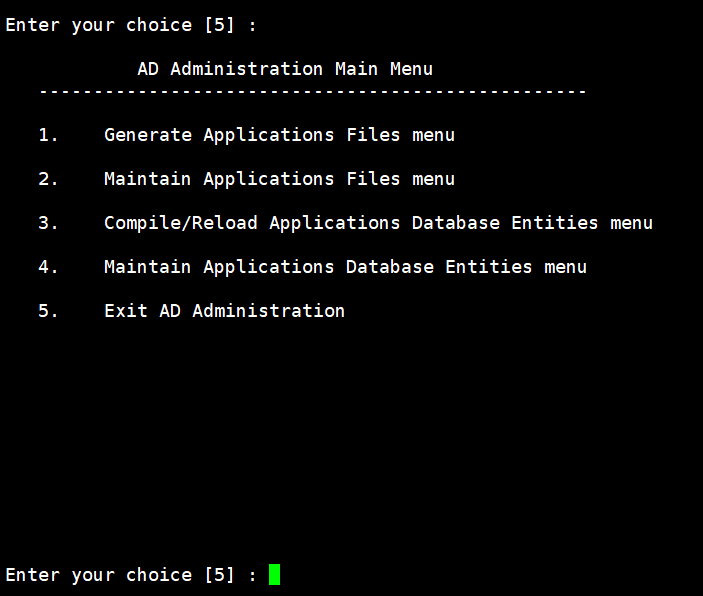 |
Section 6 – Starting and Checking the Application
Step -1 Starting The Application
|
[oracle@test1 scripts]$ ./adstrtal.sh apps/apps You are running adstrtal.sh version 120.24.12020000.11 Enter the WebLogic Server password: The logfile for this session is located at /u01/oracle/PROD/fs1/inst/apps/PROD_test1/logs/appl/admin/log/adstrtal.log Executing service control script: /u01/oracle/PROD/fs1/inst/apps/PROD_test1/admin/scripts/jtffmctl.sh start Timeout specified in context file: 100 second(s) script returned: **************************************************** You are running jtffmctl.sh version 120.3.12020000.4 Validating Fulfillment patch level via /u01/oracle/PROD/fs1/EBSapps/comn/java/classes Fulfillment patch level validated. Starting Fulfillment Server for PROD on port 9300 … jtffmctl.sh: exiting with status 0 .end std out. .end err out. **************************************************** Executing service control script: /u01/oracle/PROD/fs1/inst/apps/PROD_test1/admin/scripts/adopmnctl.sh start Timeout specified in context file: 100 second(s) script returned: **************************************************** You are running adopmnctl.sh version 120.0.12020000.2 Starting Oracle Process Manager (OPMN) … adopmnctl.sh: exiting with status 0 adopmnctl.sh: check the logfile /u01/oracle/PROD/fs1/inst/apps/PROD_test1/logs/appl/admin/log/adopmnctl.txt for more information … .end std out. .end err out. **************************************************** Executing service control script: /u01/oracle/PROD/fs1/inst/apps/PROD_test1/admin/scripts/adapcctl.sh start Timeout specified in context file: 100 second(s) script returned: **************************************************** You are running adapcctl.sh version 120.0.12020000.6 Starting OPMN managed Oracle HTTP Server (OHS) instance … adapcctl.sh: exiting with status 0 adapcctl.sh: check the logfile /u01/oracle/PROD/fs1/inst/apps/PROD_test1/logs/appl/admin/log/adapcctl.txt for more information … .end std out. .end err out. **************************************************** Executing service control script: /u01/oracle/PROD/fs1/inst/apps/PROD_test1/admin/scripts/adnodemgrctl.sh start -nopromptmsg Timeout specified in context file: -1 second(s) script returned: **************************************************** You are running adnodemgrctl.sh version 120.11.12020000.12 Calling txkChkEBSDependecies.pl to perform dependency checks for ALL MANAGED SERVERS Perl script txkChkEBSDependecies.pl got executed successfully Starting the Node Manager… Refer /u01/oracle/PROD/fs1/inst/apps/PROD_test1/logs/appl/admin/log/adnodemgrctl.txt for details NodeManager log is located at /u01/oracle/PROD/fs1/FMW_Home/wlserver_10.3/common/nodemanager/nmHome1 adnodemgrctl.sh: exiting with status 0 adnodemgrctl.sh: check the logfile /u01/oracle/PROD/fs1/inst/apps/PROD_test1/logs/appl/admin/log/adnodemgrctl.txt for more information … .end std out. *** ALL THE FOLLOWING FILES ARE REQUIRED FOR RESOLVING RUNTIME ERRORS *** Log File = /u01/oracle/PROD/fs1/inst/apps/PROD_test1/logs/appl/rgf/TXK/txkChkEBSDependecies_Fri_Jul_14_16_22_06_2023 /txkChkEBSDependecies_Fri_Jul_14_16_22_06_2023.log .end err out. **************************************************** Executing service control script: /u01/oracle/PROD/fs1/inst/apps/PROD_test1/admin/scripts/adalnctl.sh start Timeout specified in context file: 100 second(s) script returned: **************************************************** adalnctl.sh version 120.3.12020000.4 Checking for FNDFS executable. Starting listener process APPS_PROD. adalnctl.sh: exiting with status 0 adalnctl.sh: check the logfile /u01/oracle/PROD/fs1/inst/apps/PROD_test1/logs/appl/admin/log/adalnctl.txt for more information … .end std out. .end err out. **************************************************** Executing service control script: /u01/oracle/PROD/fs1/inst/apps/PROD_test1/admin/scripts/adcmctl.sh start Timeout specified in context file: 1000 second(s) script returned: **************************************************** You are running adcmctl.sh version 120.19.12020000.7 Starting concurrent manager for PROD … Starting PROD_0714@PROD Internal Concurrent Manager Default printer is noprint adcmctl.sh: exiting with status 0 adcmctl.sh: check the logfile /u01/oracle/PROD/fs1/inst/apps/PROD_test1/logs/appl/admin/log/adcmctl.txt for more information … .end std out. .end err out. **************************************************** Executing service control script: /u01/oracle/PROD/fs1/inst/apps/PROD_test1/admin/scripts/adadminsrvctl.sh start -nopromptmsg Timeout specified in context file: -1 second(s) script returned: **************************************************** You are running adadminsrvctl.sh version 120.10.12020000.11 Starting WLS Admin Server… Refer /u01/oracle/PROD/fs1/inst/apps/PROD_test1/logs/appl/admin/log/adadminsrvctl.txt for details AdminServer logs are located at /u01/oracle/PROD/fs1/FMW_Home/user_projects/domains/EBS_domain_PROD/servers/AdminServer/logs adadminsrvctl.sh: exiting with status 0 adadminsrvctl.sh: check the logfile /u01/oracle/PROD/fs1/inst/apps/PROD_test1/logs/appl/admin/log/adadminsrvctl.txt for more information … .end std out. .end err out. **************************************************** Executing service control script: /u01/oracle/PROD/fs1/inst/apps/PROD_test1/admin/scripts/admanagedsrvctl.sh start forms_server1 -nopromptmsg Timeout specified in context file: -1 second(s) script returned: **************************************************** You are running admanagedsrvctl.sh version 120.14.12020000.12 Starting forms_server1… Server specific logs are located at /u01/oracle/PROD/fs1/FMW_Home/user_projects/domains/EBS_domain_PROD/servers/forms_server1/logs admanagedsrvctl.sh: exiting with status 0 admanagedsrvctl.sh: check the logfile /u01/oracle/PROD/fs1/inst/apps/PROD_test1/logs/appl/admin/log/adformsctl.txt for more information … .end std out. .end err out. **************************************************** Executing service control script: /u01/oracle/PROD/fs1/inst/apps/PROD_test1/admin/scripts/admanagedsrvctl.sh start oafm_server1 -nopromptmsg Timeout specified in context file: -1 second(s) script returned: **************************************************** You are running admanagedsrvctl.sh version 120.14.12020000.12 Starting oafm_server1… Server specific logs are located at /u01/oracle/PROD/fs1/FMW_Home/user_projects/domains/EBS_domain_PROD/servers/oafm_server1/logs admanagedsrvctl.sh: exiting with status 0 admanagedsrvctl.sh: check the logfile /u01/oracle/PROD/fs1/inst/apps/PROD_test1/logs/appl/admin/log/adoafmctl.txt for more information … .end std out. .end err out. **************************************************** Executing service control script: /u01/oracle/PROD/fs1/inst/apps/PROD_test1/admin/scripts/admanagedsrvctl.sh start oacore_server1 -nopromptmsg Timeout specified in context file: -1 second(s) script returned: **************************************************** You are running admanagedsrvctl.sh version 120.14.12020000.12 Starting oacore_server1… Server specific logs are located at /u01/oracle/PROD/fs1/FMW_Home/user_projects/domains/EBS_domain_PROD/servers/oacore_server1/logs admanagedsrvctl.sh: exiting with status 0 admanagedsrvctl.sh: check the logfile /u01/oracle/PROD/fs1/inst/apps/PROD_test1/logs/appl/admin/log/adoacorectl.txt for more information … .end std out. .end err out. *************************************************** All enabled services for this node are started. adstrtal.sh: Exiting with status 0 adstrtal.sh: check the logfile /u01/oracle/PROD/fs1/inst/apps/PROD_test1/logs/appl/admin/log/adstrtal.log for more information … |
Step -2 Checking Application From Front END and Backend
|
Although we have enabled JWS by which you can open the application in all JWS-supported browsers including Google Chrome but we will open the application in Microsoft Edge
|
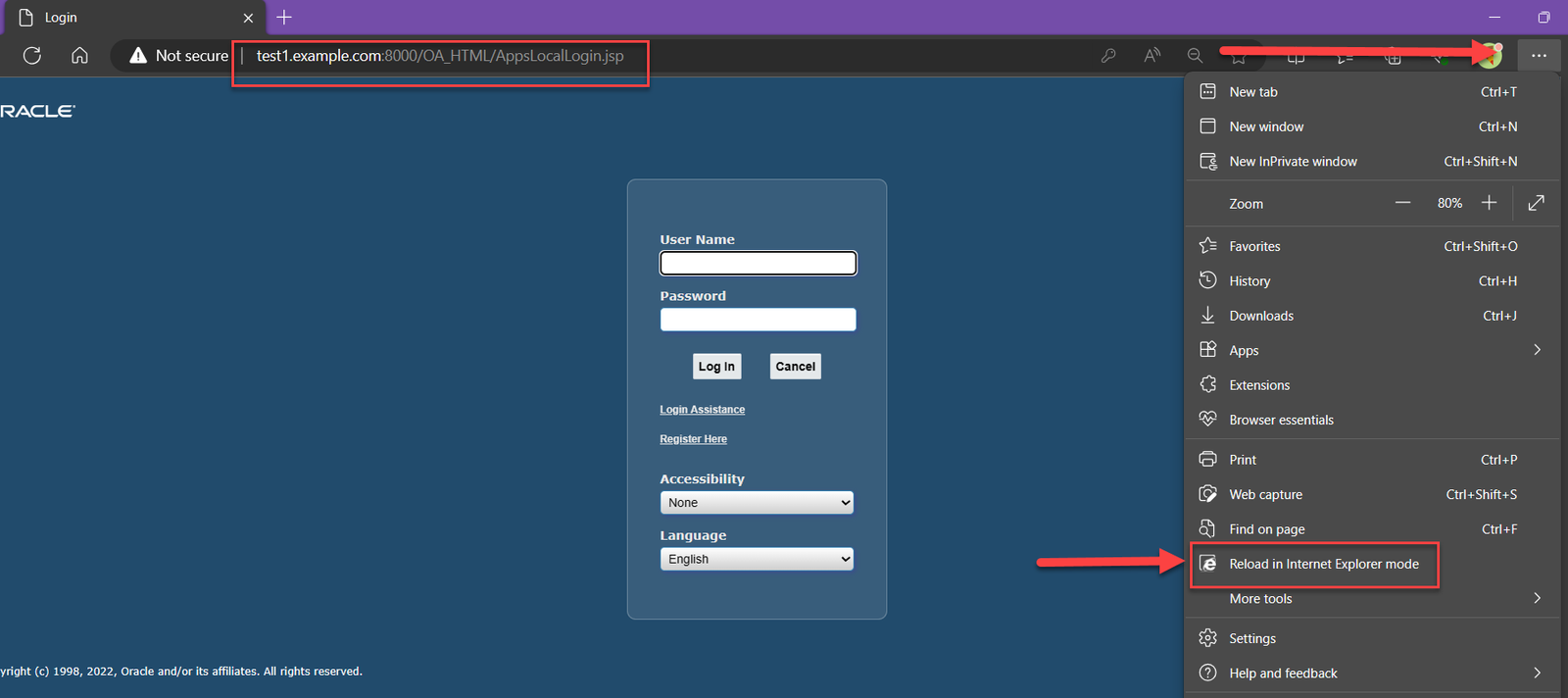 |
|
Enable the Following Options on This Link 1 Open This Page in Compatibility View (Once you will Enable the Page will be reloaded) 2 Open this Page In Internet Explorer Mode Next Time (Once you will Enable the Page will be reloaded again |
 |
|
Now login with the Credentials as Shown in the Picture |
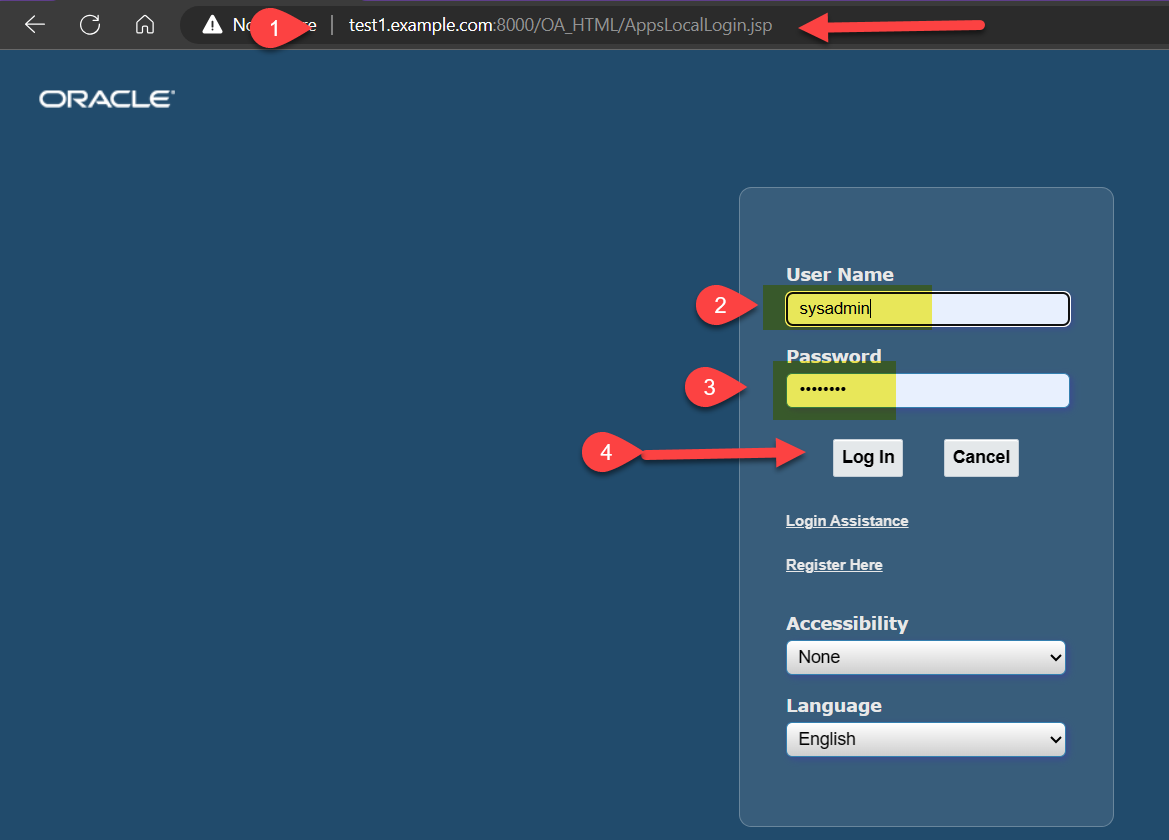 |
|
As We are logging in first time after the upgrade it will give you this warning, Click Unlock |
 |
|
Select the following option and Proceed as shown in the Picture. It will proceed to the Login Screen Again
|
 |
| Again Login with the Credentials as Shown in the Picture |  |
|
 |
|
As You can See the Following Application and Database Version Database Version: 12.1.0.2 Application Version: 12.2.12 |
 |
|
Login with the APPS or SYS user on Sqllplus to check the Application Version |
SQL> select release_name from apps.fnd_product_groups; RELEASE_NAME ————————————————– 12.2.12 |
After successfully upgrading our Oracle Application from 12.2.0 to 12.2.12 and verifying its functionality, our next blog will focus on upgrading the 12c database to version 19c.
Oracle EBS Database Upgrade from 12c to 19c Part-1
Oracle EBS Database Upgrade from 12c to 19c Part-2
 Oracle Solutions We believe in delivering tangible results for our customers in a cost-effective manner
Oracle Solutions We believe in delivering tangible results for our customers in a cost-effective manner
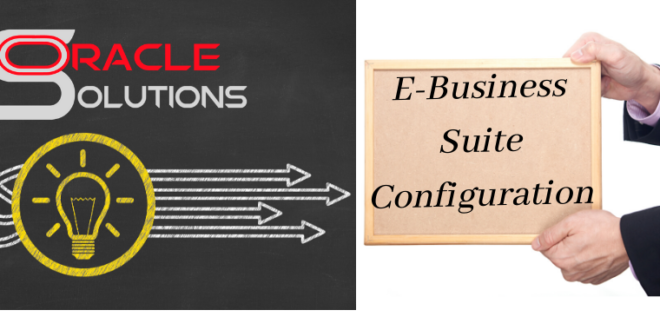



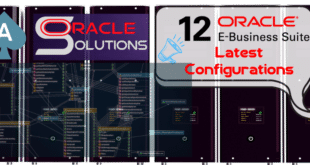

2 comments
Pingback: Oracle EBS Database Upgrade from 12c to 19c - Oracle Solutions
Pingback: Oracle APPS 12.2 on OEL 7.9 - Oracle Solutions